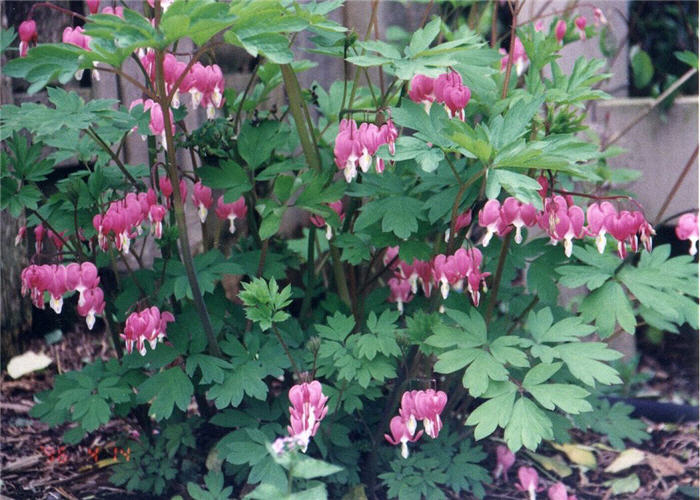| Botanical Name: Dicentra formosa | |
| Common Name: Western Bleeding Heart |

-
Anatomy
-
Culture
-
Design
Plant Type
Perennial
Height Range
Under 1'
Flower Color
Pink
Flower Season
Spring
Leaf Color
Green, Blue Green
Bark Color
n/a
Fruit Color
n/a
Fruit Season
n/a
Sun
Half, Shade
Water
Medium, Extra in Summer
Growth Rate
Moderate
Soil Type
Loam
Soil Condition
Average, Rich, Well-drained
Soil pH
Acid, Neutral
Adverse Factors
n/a
Design Styles
English Cottage, Formal, Japanese, Woodland
Accenting Features
Showy Flowers
Seasonal Interest
Spring
Location Uses
Perennial Border, Patio, Raised Planter
Special Uses
Cut Flowers, Small Spaces
Attracts Wildlife
Hummingbirds
Information by: Stephanie Duer
Photographer: Steve Jacobs
Photographer: Steve Jacobs
-
Description
-
Notes
Western bleeding heart is a hardy, moderate to low water perennial well suited to shady borders. It has deeply toothed blue-green, ferny foliage that forms mounds that grow 6 to 12 inches tall, but may slowly spread 12 to 18 inches by way of rhizomes. Medium to deep pink heart-shaped flowers hang along arching stems in late spring. This west-coast native is remarkably drought tolerant. Attracts hummingbirds but not deer.
Grow in well drained, loamy soil in part to full shade (though flowering will be less in dark shade). Deadhead spent flowers for a tidy appearance, but otherwise, it doesn't need much but a bit of regular watering. Cut back old foliage in late winter to early spring; it can also be divided then, if desired (see Guides).